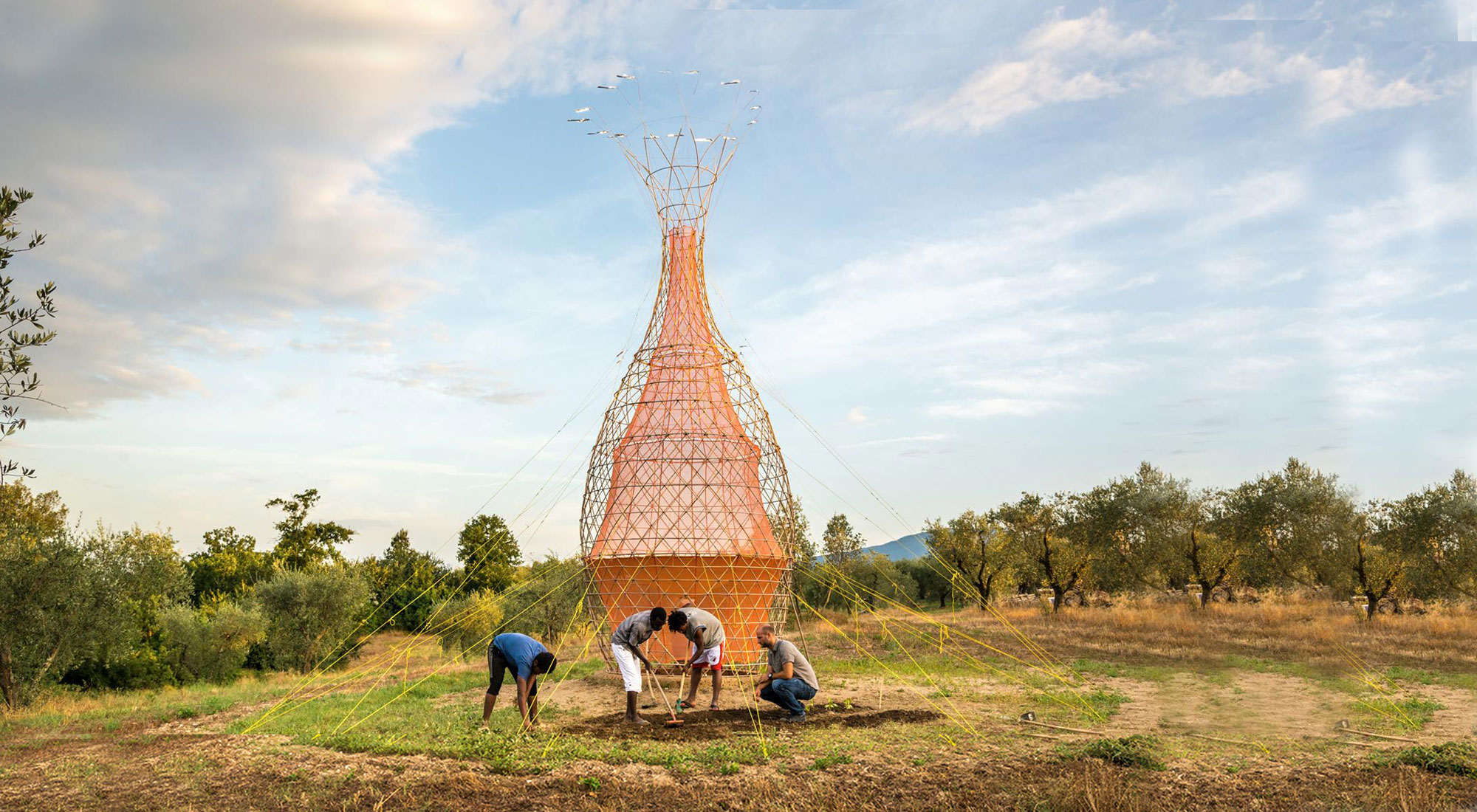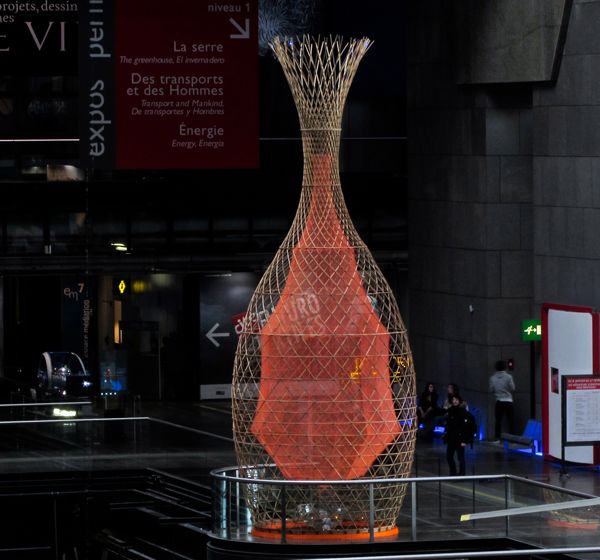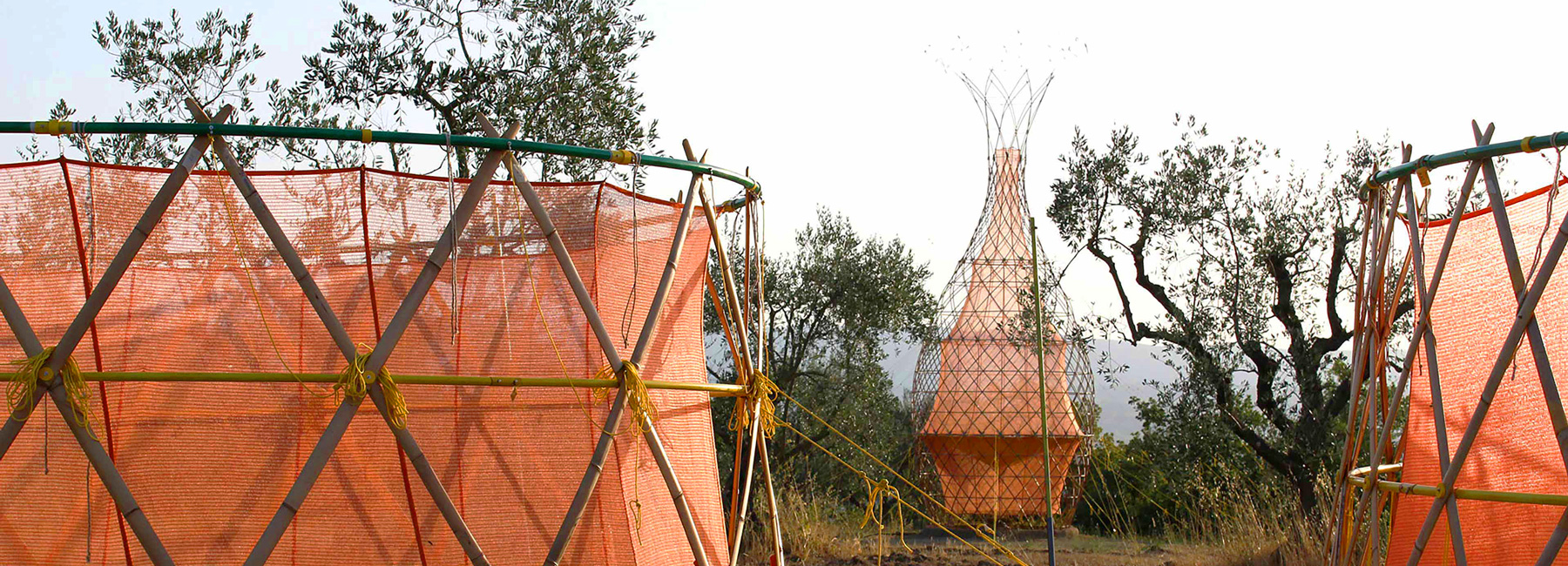
We also study the local culture, the craftsmanship and construction techniques, vernacular architecture, and ancient, forgotten traditions,’ said Arturo Vittori. Some of them are capable of collecting water from the air and to and store it to survive in the most hostile environments on earth. Insects, animals, and plants develop specific strategies to live in a specific environment. Like the Warka tree, we aim to serve the physical and spiritual needs of the community. “’Our work finds inspiration from nature. It has an important symbolic value, it is the center of the local community, fundamental for the local ecosystem by providing Nutrition (fig fruits are edible eaten by people but also sheep, goats, monkeys, and birds.), Health (the leaves are used in traditional medicine), Shade (micro-climate formed under the tree), and offering a gathering place…” “The name ‘Warka’ comes from the Warka Tree (Ficus vasta), which is a wild large fig tree, endemic to Ethiopia and Yemen. Future Makers: in this exclusive movie, Italian architect Arturo Vittori explains how his wooden Warka Water. The village comprises seven ‘warka houses’ inspired by the region’s vernacular dwellings two ‘warka towers’ designed to collect and harvest potable water from the air ‘warka santiation’ composting toilets that operate without flushing water a ‘warka pavilion’ and a modular edible ‘warka garden’ that provides food for residents.” Arturo Vittori's Warka Water towers harvest clean drinking water from the air.
Warka water tower how to#
“The project, which has been under construction in the congo basin for 18 months - the largest tropical rainforest in the world - will eventually form a community for local artisans, serving as an example of how to live with nature. In 2022, the team is building a sustainable, community-driven Warka village and cultural center in Mvoumagomi, Cameroon.

The entire tower is very light, it’s almost 80 kilograms, and it’s 12 meters high, so that was the big challenge-how to make it possible to build without scaffolding, without machinery, only by construction by hand.” “The idea is to have a structure simple to construct on-site. In some parts of Ethiopia, Smithsonian Magazine notes, “finding potable water is a six-hour journey.” Vittori shares more in the 2016 Dezeen Futuremakers video above: The first Warka tower was built in Dorze, Ethiopia. Computer-generated structural designs are also open-source so that communities around the globe can learn how to build them, and can adapt the designs for their specific needs. Also, we appeal to the Government and local authorities to evaluate the merits of this technology and explore the possibility of harnessing it to the benefit of the people.Fog catchers that extend into the sky, Warka Water towers harvest local potable water for off-the-grid and drought-impacted communities.ĭesigned by architects Atruio Vittori and Andreas Vogler, the water collecting towers were conceived to be constructed with indigenous techniques and local natural materials.

We appeal to all the readers to help us spread this article to a larger audience and get their support. These Warka Water towers can be used in water thirsty villages in developing countries.

Stalks of bamboo or juncus tied together to make Warka Water tower. These Warka Water towers are being used in Namib desert in Africa to produce water and meet the needs of the local community. Ideal for Deserts or Drought impacted regions The tower is integrated with the natural landscape using natural fibers. It can be made by using materials available locally.

A Warka Water tower can be built in about a week’s time by engaging 4 people and costs approximately $550. When the droplets of dew form, they go into a basin at the base of the structure through the mesh. The polypropylene and nylon fibers act as a scaffold for condensation. These Warka Water towers mimic the shape of beetles and are gigantic 30 feet tall towers which can collect about 25 gallons of drinkable water every day by harvesting the water vapor in the atmosphere.Įach Warka Water tower has two sections: a semi-rigid exoskeleton made by tying stalks of bamboo or juncus together and a plastic mesh, reminiscent of the bags oranges come in. Eventually, after multiple levels of testing and re-designing, he conceptualized a tower which would use atmospheric water vapor to produce water. Keeping this in mind and concerned with the problems of villagers, Arturo Vittori, decided to find a solution to this problem. Overtime, most of the wells have dried up and the ground water level is dropping at a very fast pace. This water is generally not fit for human consumption. In remote localities, women and children have to walk several miles to collect potable water from wells or lakes. Also, around 1,400 children under the age of five die every day from water-borne diseases. It is estimated that more than 800 million people around the world don’t have access to safe drinking water.


 0 kommentar(er)
0 kommentar(er)
